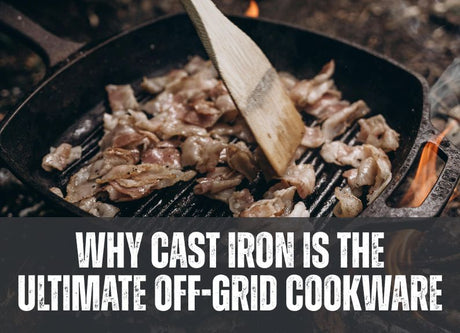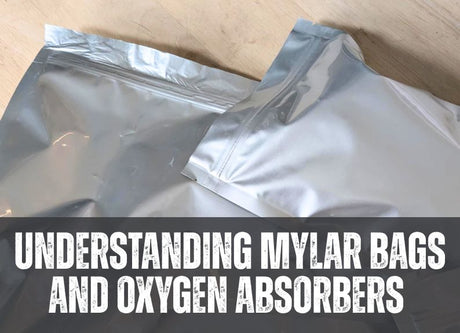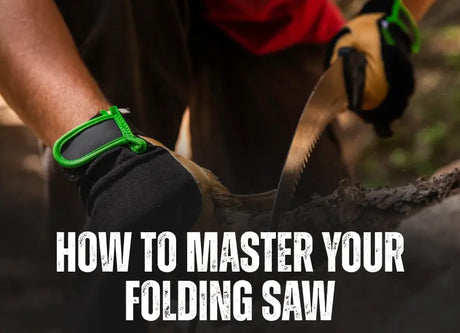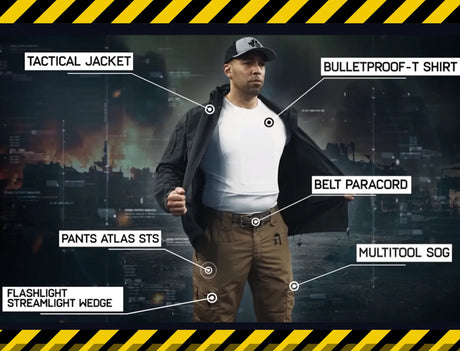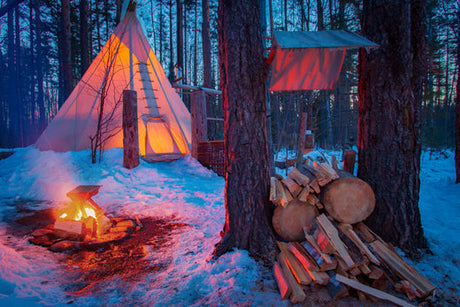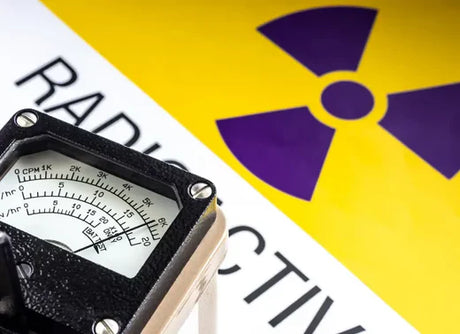In the middle of nature, hot tent camping can turn your winter excursions into a cozy and warm base camp. Unlike traditional winter camping where you’re constantly trying to keep the warmth in, a hot tent can offer you a crackling stove to relax, keep your gear dry and cook hearty meals.
But be warned! Camping in a hot tent is no easy task. You should still have the skills and information necessary to be prepared for anything that may come your way. From its historical beginnings to the necessary gear and techniques, everything you need to know about hot tent camping will be covered in this guide. Let's begin.
Table of Contents
- The History of Hot Tents
- What is a Hot Tent?
- Essential Gear for Hot Tent Camping
- How to Set Up Your Hot Tent
- Staying Safe While Hot Tent Camping
- Mastering Winter Survival: Firewood, Cooking, and Sleeping Tips
- The Science of Staying Warm and Dry
- Why Hot Tent Camping is Worth It
- Where to Buy the Best Hot Tents and Stoves
The History of Hot Tents
The origins of hot tents can be dated back to indigenous communities (The Inuit and Sami) who hand-made portable shelters using different types of animal hides and basic wood-burning stoves. For centuries they lived in some of the coldest places on earth and relied on these shelters to survive brutal winters. One of the keys to their survival was the tents ability to keep in heat while allowing smoke to escape through a chimney or vent.
Since then, hot tents materials and techniques have advanced. With more durable canvas allowing better insulation compared to traditional hides. Over time, canvas hot tents have become a staple for explorers and military expeditions that operate in below freezing temperatures. Many early military shelters were inspired by the design principles of traditional hot tents, adapted for use in sub-zero battlefields.
With Modern Hot tents, lightweight materials like sil-nylon and titanium are being used, making them more portable and accessible for recreational use. Even inflatable hot tents and ultralight woodstove set-ups have been introduced to the market, allowing campers next-level convenience when setting up camp in extreme winter conditions. This likely has increased the popularity of hot tent camping. According to Google Trends, Searches for “hot tent camping” have risen by over 40% in the past decade.

Tepee house Indians sketch hand drawn illustration | Shutterstock
What is a Hot Tent?
Put simply, a hot tent is exactly what it sounds like… No, it does not create its own heat, but it is specifically designed to keep heat in. When used in combination with a wood stove, hot tents retain heat in freezing temperatures while venting out smoke through a chimney, allowing you to cook, dry gear, and create a comfortable base camping amidst the cold snow. But hot tents come in a variety of styles, each catering to a specific type of environment.
Types of Hot Tents
- Canvas Hot Tents: Perfect for those looking to set up a permanent base camp, Canvas hot tents are typically set up for long-term use since they take a bit more effort to set up.
- Inflatable hot tents: This type of hot tent is great for those campers who are always on the go. They are lightweight and quick to set up.
- Pyramid Tents (Tipi Style): These single pole tents offer a quick set-up and are great for camping in tighter spaces.
- Ultralight Tents: These tents are perfect for backpackers looking to reduce weight without giving up warmth.
Why Hot Tents Are Unique
A hot tent is unique because of its defining features; durability, heat retention, and ventilation. Unlike regular winter tents that struggle to manage condensation and cold, hot tents provide:
- Heat Retention: The materials and design of hot tents allow for effective warming, even in extreme cold.
- Ventilation: A properly installed stove jack ensures smoke is vented safely, reducing carbon monoxide risks.
- Multi-Functionality: Beyond warmth, you can cook meals, dry wet clothes, and enjoy a crackling fire from the stove.
When selecting a hot tent, it's essential to consider factors such as durability, heat retention, and portability. A survey by RMS North America found that 85% of campers expressed a desire for more technology at campgrounds, indicating a trend towards modernized camping experiences.
Modern advancements in materials and design have made hot tents more accessible to a broader range of campers, from seasoned adventurers to beginners seeking a warm introduction to winter camping.
Essential Gear for Hot Tent Camping
Now we’ve gone over what a hot tent is and its history. Lets go over the essentials for successful Hot tent camping. Hot tent camping really needs two things. A hot tent and a Wood-burning stove like a winnerwell. Yes there are some other recommended accessories but at its core, camping in a hot tent really only requires these items. But don’t worry we go over the other recommendation too.
Hot tent: Choosing the right shelter
As we discussed in the last section, there are multiple types of hot tents, but selecting the right one depends on your priorities. Do you want a more durable tent? or something more portable? Maybe you want a convenient set-up
Here are the main types of Hot tents:
- Canvas Tents: Known for their excellent heat retention and spark resistance, canvas tents are ideal for extended trips or harsh conditions.
- Sil-Nylon Tents: Often Lightweight and water-resistant, these tents are perfect for any backpacker seeking portability.
- Inflatable Tents: Quick to set up and compact, these are great for campers who are looking to prioritize efficiency and convenience. But in colder climates, the tent will likely lose air pressure and collapse.
- Pyramid (Tipi-Style) Tents: These single-pole tents are easy to pitch, making them a popular choice for hot tenting, but they often don't have a lot of comfortability features, like inside pockets.
In our recent video, we dive into different types of hot tents, rating them based on key factors like durability, weatherproofing, heat retention, ease of setup, price, comfort features, and overall weight. By breaking down the strengths and weaknesses of each type, we provide valuable insights to help you find the perfect hot tent for your camping style and needs. If you’re unsure which tent suits you best, be sure to check it out for an in-depth comparison.
Expert Tip: Consider the size of your group and your camping style when selecting your tent. For example, larger canvas tents offer more space but are heavier, while sil-nylon and inflatable tents cater to solo or minimalist campers.
Hot Tent Stoves: The Heart of Your Camp
A wood-burning stove is the cornerstone of any hot tent setup because what good is a hot tent with no heat source! It allows you to cook your meals, dry your wet gear and obviously stay warm! Here are some key things to consider when choosing a wood stove.
The Material:
- Titanium Stoves: Lightweight and durable, titanium stoves are perfect for backpackers or those looking to reduce the weight of their gear.
- Stainless Steel Stoves: Heavier but more budget-friendly, these stoves are ideal for car camping or short-distance treks
Features to Look For When Choosing a wood stove:
Glass panels for monitoring the fire and providing ambient light.
- Foldable designs for easy packing and portability.
- Spark arrestors to prevent chimney fires.
Data Insight: Studies show that titanium stoves can be up to 40% lighter than stainless steel models, making them a popular choice among avid campers.
Must-Have Accessories for Hot Tent Camping
Having the right accessories can enhance your safety, comfort, and overall experience. Consider including these essentials in your setup:
- Heat-Resistant Gloves: Protect your hands when handling the stove or chimney.
- Ground Mats: Reflective mats protect the tent floor from heat and prevent embers from damaging your gear.
- Portable Saws and Hatchets: Hatchets and portable saws such as a folding hand saw efficiently help you collect and prepare firewood for your stove.
- CO Detectors: A crucial safety tool to monitor carbon monoxide levels and ensure proper ventilation.
- Fire Starters: Compact, wax-based starters or Esbit cubes are reliable options for lighting your stove in wet or cold conditions.
- Blow Rods: Lightweight tools that help direct oxygen to your fire for efficient ignition.
With the right gear, your hot tent camping experience will be warm, safe, and unforgettable. Investing in high-quality equipment ensures you’re prepared for whatever winter throws your way.
How to Set Up Your Hot Tent
Setting your hot tent up correctly will be the difference between a warm cozy night and freeze of your behind. Proper setup is essential to experience the maximum benefits of your hot tent, ensuring you are safe and comfortable. Each tent will have their own unique set-up instruction, but outside of just setting up your tent, here are some other things you should consider.
Choosing the Right Location
The location of your hot tent can make or break your camping experience. Look for a spot that offers:
- Natural Windbreaks: Trees or other natural barriers can protect your tent from harsh winds and reduce heat loss.
- Firewood Accessibility: Choose an area with ample deadfall nearby to save time and energy collecting firewood.
- Flat, Dry Ground: Avoid setting up on slopes or near water sources to minimize moisture and cold drafts.
Pro Tip: In snowy conditions, compact the snow where you plan to pitch your tent. This creates a solid foundation and prevents stakes from loosening as the snow settles.
Step-by-Step Guide to Setting Up Your Hot Tent
-
Pitch the Tent:
- Lay out your tent and secure the base with high-quality stakes.
- Raise the tent according to its design (e.g., center pole for pyramid tents or inflating beams for inflatable tents).
-
Set Up the Stove:
- Assemble the stove and chimney outside the tent first.
- Insert the chimney through the stove jack, ensuring a snug fit.
- Position the stove securely on a heat-resistant ground mat inside the tent.
-
Check Ventilation:
- Open vents or windows to ensure proper airflow and prevent carbon monoxide buildup.
Tips for Extreme Winter Weather
- Secure Your Tent: Use additional guylines and snow anchors in high-wind or heavy-snow conditions.
- Avoid Exposed Areas: Setting up near open spaces can expose your tent to stronger winds and colder temperatures.
- Monitor Heat Levels: Keep the stove at a steady burn to maintain warmth without overheating the tent.
Data Insight: Studies show that tents set up near tree lines experience up to 25% less heat loss due to reduced wind exposure.
Safety Checklist for Setup
- Test your tent and stove setup at home to familiarize yourself with the process.
- Inspect your gear for damage or wear, especially the stove jack and chimney pipe.
- Always keep a fire extinguisher or a bucket of snow nearby in case of emergencies.
By taking the time to set up your hot tent properly and choosing the best location, you’ll create a warm, secure base camp that stands up to even the harshest winter conditions.
Staying Safe While Hot Tent Camping
Hot tent camping offers warmth and comfort in harsh winter conditions, but safety should always be your top priority. From managing your stove to ensuring proper ventilation, following these guidelines will help you avoid potential hazards and enjoy a worry-free adventure.
Carbon Monoxide Safety
Using a wood-burning stove inside your tent requires vigilance to prevent carbon monoxide buildup. Follow these essential tips:
- Ensure Proper Ventilation: Keep the tent’s vents or windows open to allow fresh air circulation and prevent dangerous gas accumulation.
- Use a Carbon Monoxide Detector: A portable CO detector adds an extra layer of protection, alerting you if levels become unsafe.
- Monitor the Stove: Always make sure the stove pipe is properly connected and drawing smoke outside the tent.
According to outdoor safety studies, carbon monoxide incidents in camping settings are rare but preventable with proper precautions and equipment.
Fire Safety Tips
The combination of an enclosed space and a live fire means fire safety is critical:
- Position the Stove Carefully: Place the stove on a heat-resistant ground mat and ensure it’s stable to prevent tipping.
-
Inspect the Chimney: Regularly clean the chimney to avoid creosote buildup, which can ignite and cause a chimney fire.
- Keep Combustible Items Away: Maintain a safe distance between the stove and flammable materials like sleeping bags and clothing.
- Have a Fire Plan: Keep a fire extinguisher, fire blanket, or bucket of snow within reach in case of emergencies.
Avoid Burns and Injuries
The stove and chimney get extremely hot during use, so take precautions to prevent burns:
- Use Heat-Resistant Gloves: Always wear gloves when handling the stove or adding wood.
- Designate a Safe Zone: Establish a no-touch zone around the stove, especially if camping with children or pets.
- Practice Safe Movement: Be mindful of the stove pipe when moving around the tent to avoid accidental contact.
Managing Extreme Weather
- High Winds: Reinforce your tent with additional guylines and snow anchors to prevent collapse.
- Heavy Snow: Clear snow off your tent regularly to avoid excessive weight on the structure.
- Freezing Temperatures: Monitor the stove to maintain consistent heat and avoid freezing water supplies overnight.
General Safety Guidelines
- Never Leave the Stove Unattended: Always extinguish the fire before leaving the tent or going to sleep.
- Inspect Gear Regularly: Check your stove, tent, and accessories for wear and tear before each trip.
-
Carry Emergency Equipment: Bring a first-aid kit, extra fire starters, and a backup heat source like a portable heater.
Expert Insight: Experienced campers recommend practicing your stove setup and operation at home to gain confidence before heading into the wilderness.
By prioritizing safety and taking the necessary precautions, you can enjoy all the benefits of hot tent camping without unnecessary risks. A safe camp is a happy camp, so stay prepared and vigilant to make the most of your winter adventure.
Mastering Winter Survival: Firewood, Cooking, and Sleeping Tips
Hot tent camping in winter requires a blend of preparation and adaptability to stay warm, nourished, and well-rested. From collecting firewood to optimizing your sleeping setup, here’s how to master winter survival in your hot tent.
Firewood: Collecting and Preparing Fuel
The wood-burning stove is the heart of your hot tent, so having enough dry firewood is essential:
- What to Look For: Dead trees with peeling bark or branches snapped cleanly are great indicators of dry wood. Avoid wet or green wood, as it won’t burn efficiently.
-
Efficient Collection Tips:
- Bring a portable saw or hatchet to cut and split wood into stove-friendly sizes.
- Look near fallen trees or swamps for deadwood, but be cautious around unstable ice.
- Start gathering firewood as soon as you set up camp to make the most of daylight.
- Drying Wood: Stack firewood near your stove inside the tent to dry damp pieces for future use.
Pro Tip: A well-stocked woodpile can save you from the frustration of trying to light damp wood in freezing conditions.
Cooking: Making the Most of Your Stove
Your hot tent stove isn’t just for warmth—it’s a versatile tool for preparing hearty meals in the wilderness:
- Efficient Cooking: Place pots and pans directly on the stove or use a cookie sheet as a makeshift skillet.
- Boiling Snow: Melting snow for drinking water is straightforward but remember to bring it to a rolling boil to kill bacteria.
- What to Bring:
- Freeze-dried meals for convenience.
- Ingredients that can withstand freezing temperatures, like rice, pasta, or canned goods.
- A compact spice kit to enhance your meals.
Cooking Tip: Avoid grease-heavy foods that can cause flare-ups or leave excessive residue on your stove.
Sleeping System: Staying Warm and Comfortable
A proper sleep setup is critical to maintaining body heat and ensuring a good night’s rest:
- Start with Insulation: Use an insulated sleeping pad with an R-value of 5 or higher, or layer a foam mat beneath your primary pad for extra warmth.
- Choose the Right Sleeping Bag: A winter-rated sleeping bag (-20°C or lower) with a hood and draft collar is ideal for sub-zero conditions.
-
Layering for Warmth:
- Add a summer-weight sleeping bag or quilt as an outer layer to manage condensation.
- Wear dry, lightweight base layers to bed to retain heat without sweating.
- Elevate Your Sleep: If space and weight allow, an ultralight cot can keep you off the cold ground for added comfort.
Data Highlight: A sleeping pad with an R-value of 5 retains up to 60% more heat than a standard uninsulated pad.
Moisture Management: The Key to Warmth
- Avoid Overheating: Sweating can lead to damp clothing, which drastically reduces insulation. Remove layers or ventilate as needed.
- Drying Gear: Use your stove’s ambient heat to dry wet gloves, socks, and outer layers overnight.
- Condensation Control: Keep vents open to prevent moisture buildup inside the tent.
Expert Tip: Plan for the Unexpected
Always pack a backup plan. Extra fire starters, a lightweight bivvy sack, or even chemical hand warmers can make all the difference if conditions take a turn for the worse.
By mastering these essential survival skills, you’ll not only thrive in your hot tent but also embrace the beauty of winter camping with confidence and comfort.
The Science of Staying Warm and Dry
Staying warm and dry is the cornerstone of a successful hot tent camping trip. Understanding how to manage moisture, regulate your body temperature, and maximize insulation will keep you comfortable and safe in the harshest winter conditions.
Moisture is the Enemy of Warmth
Sweating or damp clothing can quickly sap your body heat, leaving you cold and vulnerable to hypothermia. Follow these moisture control tips:
- Dress in Layers: Use a base layer (wool or synthetic) to wick moisture away, a mid-layer for insulation, and an outer shell for wind and waterproofing.
- Avoid Cotton: Cotton retains moisture and loses its insulating properties when wet. Stick to wool, polyester, or other moisture-wicking materials.
- Vent When Needed: Open your tent’s vents or remove layers during strenuous activities to prevent overheating and sweating
Data Insight: Sweating in cold conditions can reduce your core body temperature by up to 10°F, increasing the risk of hypothermia.
Body Heat Preservation: How to Stay Warm
Retaining your body heat is essential when camping in freezing temperatures:
- Focus on Extremities: Keep your hands, feet, and head warm with insulated gloves, wool socks, and a hat or balaclava.
- Trap Heat: Tighten your sleeping bag’s draft collar and hood to retain warmth while you sleep.
-
Eat for Heat: High-calorie meals and snacks provide your body with the fuel it needs to generate warmth.
Expert Tip: A hot drink before bed can boost your body’s warmth, but avoid caffeine, as it can disrupt your sleep.
The Importance of Insulation
Your gear plays a significant role in keeping you warm by creating barriers between your body and the cold:
- Sleeping Pads: Choose a sleeping pad with a high R-value (5 or higher) to minimize heat loss to the ground.
- Ground Mats: Use reflective mats under your stove to retain heat and protect the tent floor.
-
Layered Clothing: Combine different types of insulation, like fleece and down, for optimal warmth.
Drying Gear: Making Use of Your Stove
- Hang damp items near (but not on) the stove to dry them overnight.
- Use the stove’s ambient heat to keep boots, gloves, and socks ready for the next day.
Weatherproofing Your Camp
- Choose a Wind-Sheltered Spot: Set up your tent near natural barriers like tree lines to reduce wind exposure.
- Secure Your Tent: Use high-quality stakes and guylines to keep your tent stable in snowy or windy conditions.
- Monitor Weather Changes: Be prepared to adjust your setup if heavy snow or winds intensify.
By understanding the science behind staying warm and dry, you’ll be better equipped to manage your comfort and safety during hot tent camping adventures. Mastering these techniques ensures you can focus on enjoying the serenity and beauty of winter landscapes.
Why Hot Tent Camping is Worth It
Hot tent camping offers a unique and rewarding way to experience winter’s beauty while staying warm, comfortable, and well-prepared. Unlike traditional cold-weather camping, a hot tent provides a cozy haven where you can relax, cook, and truly enjoy the wilderness. Here’s why it’s worth the effort.
Immersive Experience: Connect with Nature in Winter
Winter landscapes offer a serene and magical environment that’s vastly different from other seasons. With a hot tent, you can:
- Enjoy Solitude: Escape the crowds that dominate summer camping spots.
- Spot Wildlife: Snow-covered terrain makes it easier to track and observe animals like deer, foxes, and birds of prey.
-
Embrace the Silence: Experience the calming quiet of snow-covered forests and frozen lakes.
Real-World Insight: Many campers report that hot tenting in winter deepens their connection to nature, as the snow reveals hidden trails and the beauty of untouched landscapes.
Culinary Adventures: Cooking in the Backcountry
Your hot tent stove isn’t just for heat—it opens up possibilities for cooking hearty meals that keep you energized in cold weather.
- Versatility: Cook everything from frying eggs to simmering stews directly on the stove.
- Convenience: Melt snow for water, boil tea, or bake with a Dutch oven on the stove’s surface.
- Cold Weather Perks: Winter’s chill acts as a natural refrigerator, letting you bring perishable items like meats and dairy without worry.
Pro Tip: Use the stove to make comfort foods like chili, soups, or hot chocolate—perfect for warming up after a day of outdoor activities.
Extended Camping Season: Redefine Adventure
Hot tent camping extends your camping opportunities into a season that many avoid, allowing you to:
- Camp Year-Round: Explore areas that might be overcrowded in summer but are peaceful and accessible in winter.
- Try New Activities: Combine hot tenting with snowshoeing, ice fishing, or backcountry skiing for a complete winter experience.
-
Challenge Yourself: Mastering winter camping skills is an achievement that builds confidence and resilience.
Unmatched Comfort in Harsh Conditions
A hot tent creates a warm, dry, and safe space that makes winter camping not just bearable, but enjoyable:
- Dry Your Gear: The stove allows you to dry wet clothes and boots, preventing discomfort and frostbite.
- Stay Warm: With temperatures dropping to extreme lows, the tent’s heat retention ensures you can relax comfortably.
-
Create a Base Camp: A hot tent becomes a central hub for group camping trips, offering space to gather and recharge.
According to a recent survey of winter campers, 92% said that hot tent camping significantly enhanced their enjoyment of cold-weather trips. Many cited the ability to cook warm meals, stay dry, and sleep comfortably as key benefits.
Hot tent camping transforms winter’s challenges into opportunities for adventure, comfort, and connection with nature. Whether you’re seeking solitude, camaraderie, or a fresh way to explore the outdoors, hot tenting is an experience that’s worth every ounce of preparation.
Where to Buy the Best Hot Tents and Stoves
Finding reliable, high-quality gear is crucial for a safe and enjoyable hot tent camping experience. At Canadian Preparedness, we offer a selection of hot tents, stoves, and accessories designed to keep you warm and comfortable in the harshest winter conditions. Here’s why we’re your go-to source for premium camping equipment.
Hot Tents: Durable and Versatile Options
We stock a range of hot tents tailored to different camping styles and needs:
- Canvas Tents: Known for their superior insulation and spark resistance, these are perfect for long-term or extreme-condition camping.
- Inflatable Tents: Lightweight and portable, these are ideal for campers seeking convenience and quick setups.
- Tipi-Style Tents: Easy to pitch and designed for efficient heat retention, these tents combine simplicity with performance.
- Ultralight Tents: Perfect for campers looking to carry less weight without giving up warmth.
Each tent we carry is rigorously tested for durability, heat retention, and weatherproofing, so you can trust it to perform when it matters most.
Hot Tent Stoves: Efficient Heating Solutions
Our selection of wood-burning stoves is designed to maximize heat output while minimizing weight and bulk:
- Titanium Stoves: Lightweight and portable, perfect for backpackers.
- Stainless Steel Stoves: Durable and budget-friendly, great for base camps or short-distance trips.
- Innovative Features: Look for options with glass panels for monitoring the fire, spark arrestors for safety, and foldable designs for easy packing.
Pro Tip: Pair your stove with our reflective ground mats and heat-resistant gloves for maximum safety and efficiency.
Essential Accessories: Complete Your Setup
We also offer a wide range of camping accessories to enhance your hot tenting experience:
- Portable Saws and Hatchets: Perfect for collecting and processing firewood efficiently, even in snowy or icy conditions.
- Sleeping Bags: Stay warm in extreme temperatures with our selection, including the world’s warmest sleeping bag, designed for unparalleled insulation and comfort.
- Fire Starters: Reliable and easy-to-use options to ignite your stove, even in damp or freezing conditions.
- Sleeping Pads: Insulated pads with high R-values to keep you warm by minimizing heat loss to the ground.
Pro Tip: Combining a high-quality sleeping bag with an insulated sleeping pad ensures maximum warmth and comfort during your winter camping adventures.
Whether you’re gearing up for your first winter camping trip or upgrading your existing setup, Canadian Preparedness has everything you need to make your hot tenting experience unforgettable. Shop now and prepare to embrace the cold like never before!
Hot tent camping is more than just a way to survive the cold—it’s an opportunity to thrive in it. By combining warmth, comfort, and functionality, hot tents allow you to experience the beauty and serenity of winter landscapes like never before. Whether you’re trekking through snow-covered forests, enjoying a quiet evening by the stove, or cooking hearty meals in your cozy base camp, hot tenting transforms the challenges of winter into unforgettable memories.
Now that you’re equipped with the knowledge, tips, and gear insights needed for a successful hot tent camping trip, it’s time to take action. Whether you’re a seasoned camper or a first-timer, there’s no better time to embrace this transformative way of winter camping.


